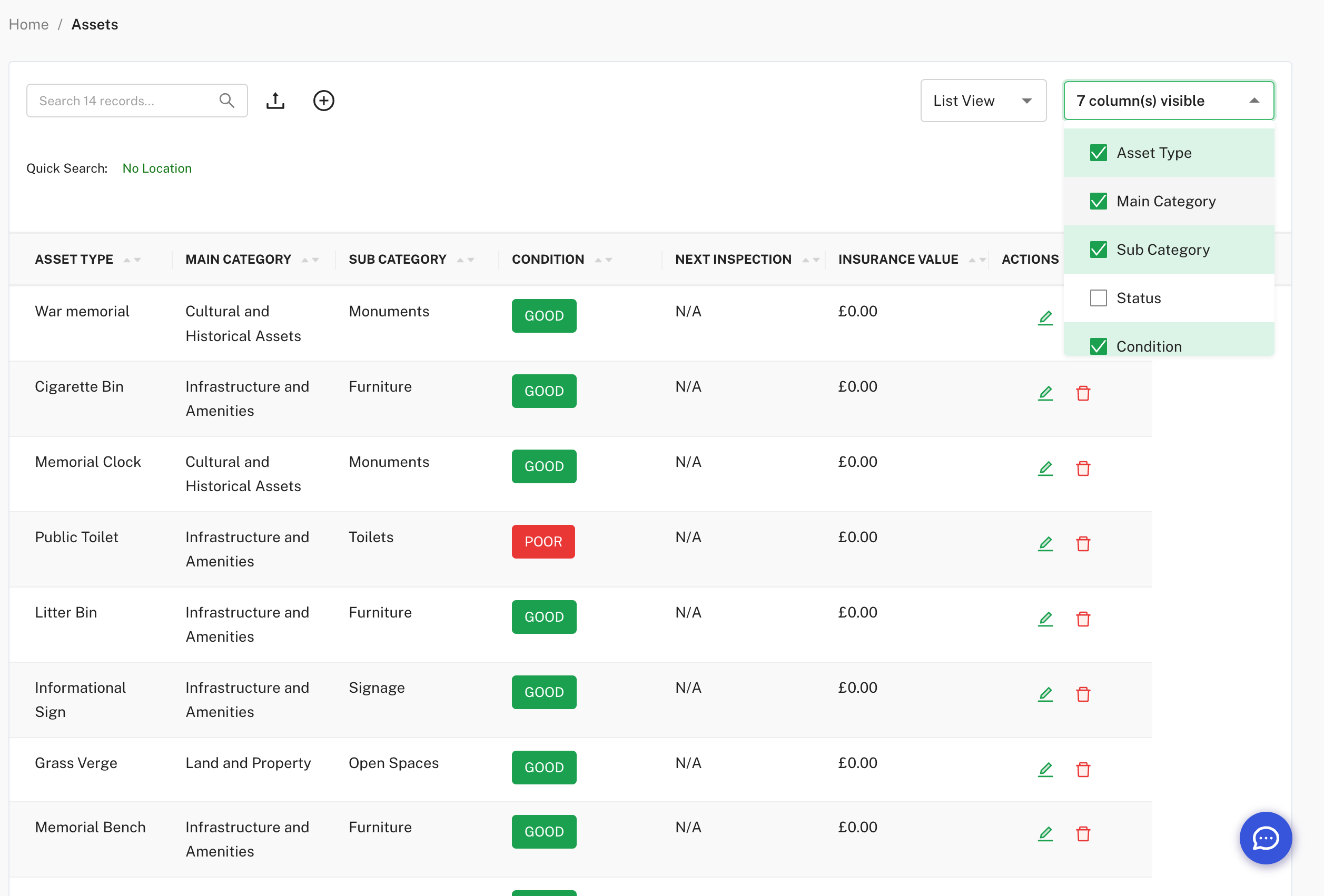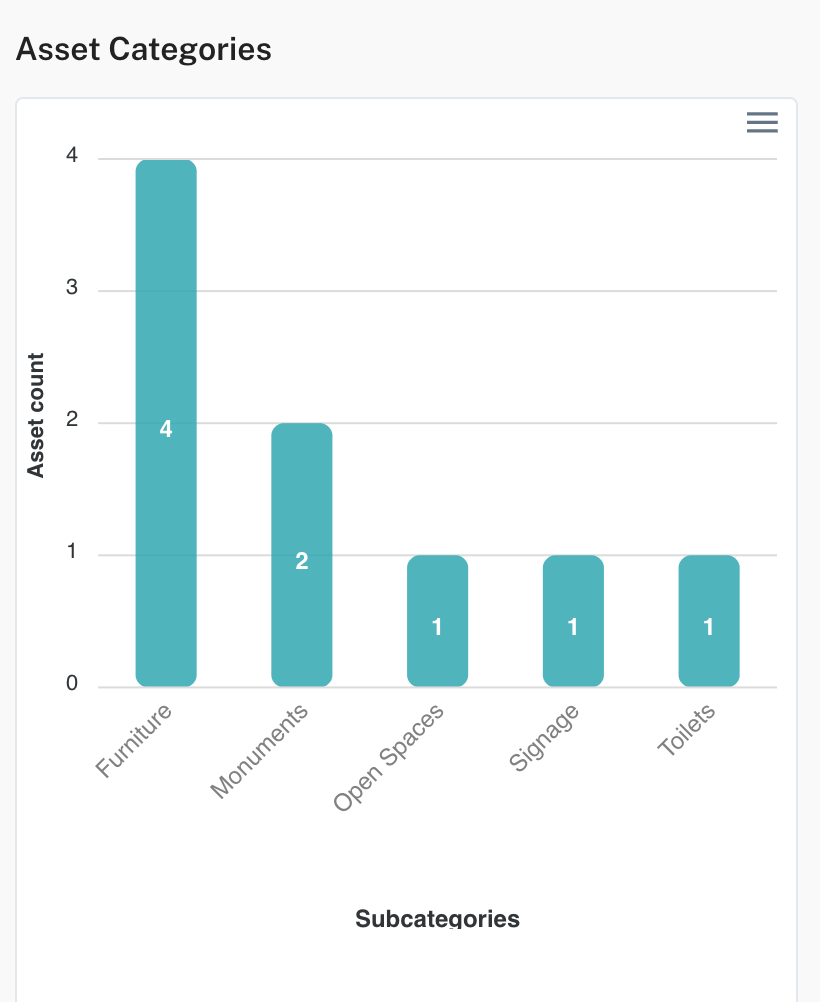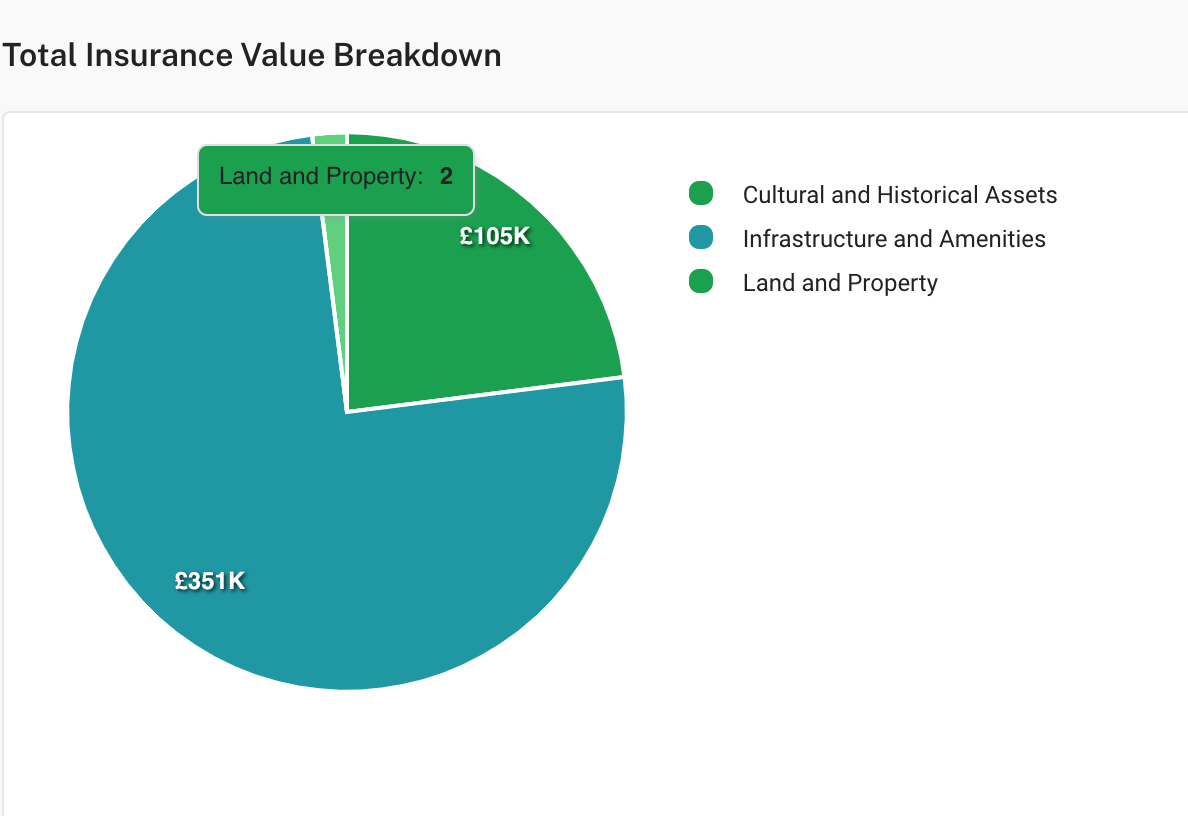Understanding Categories and Subcategories
Civic.ly comes "built-in" with the asset categories. When you add an asset, the asset is automatically assigned to these categories.
We have 6 main categories and 42 sub categories, you can read more about them below. But first, let's show you where you can see them.
Main Categories
We have 6 main categories. Which are:
- Land and Property (LP) - Real estate and permanent structure assets. Real estate assets, including buildings and plots of land that are immovable. This category represents significant council investments in property infrastructure and adheres to the Local Government Transparency Code 2014.
- Infrastructure and Amenities (IA) - Public services and essential amenity assets, Essential facilities and installations intended for public use, comfort, convenience or wellbeing. This includes recreational facilities, transportation structures, and other community amenities.
- Natural Resources (NR) - Natural landscapes and features assets. Natural landscapes and features managed or owned by the council, including natural ecosystems and their constituent elements.
- Cultural and Historical Assets (CH) - Cultural, historical, or artistic assets. Assets that have cultural, historical, or artistic significance, covering structures, places, and items that are important for cultural heritage.
- Equipment and Machinery (EM) - Machinery, vehicles, and equipment assets. Movable machinery, tools and vehicles utilised by the council for specific operational tasks. This category excludes permanent installations or structures.
- Records and Information (RI) - Records and informational assets. Various forms of records and informational assets, both digital and physical, as well as intellectual property.
Subcategories Explained
The 6 main categories are broken down into 42 Sub Categories, like so.
1. Cultural and Historical Assets
This category encompasses assets with cultural, historical, or artistic significance. It includes structures, places, and items that are important for preserving the cultural heritage of our community.
- Burial and Memorial Assets: Structures or items designed for the memorialization or burial of individuals, often holding historical or cultural significance.
- Entertainment Venues: Spaces primarily used for public entertainment that may also hold cultural, historical, or artistic value.
- Monuments: Structures or places of historical importance.
- Museums: Facilities housing collections of historical, cultural, or artistic items.
2. Equipment and Machinery
Includes movable machinery, tools, and vehicles utilized by the council for operational tasks. This category covers equipment across various functions, except for permanent installations.
- Emergency and Safety Equipment: Equipment and tools specifically designed for emergency response, safety, and rescue operations.
- Gardening and Landscaping Equipment: Tools and machinery for gardening, landscaping, and related tasks.
- General Tools and Maintenance Equipment: A broad category encompassing tools and equipment used across various council operations.
- Heavy Machinery: Large equipment or machinery used for specific operations, often related to construction or maintenance.
- Kitchen Equipment: Tools and machinery specifically for kitchen use.
- Office and IT Equipment: Devices and tools for administrative, computational, and communication tasks.
- Sanitation and Cleaning Equipment: Machinery and tools for cleaning and sanitation within council-managed areas.
- Transport Vehicles: Vehicles for transporting goods, people, or performing specific operational tasks.
3. Infrastructure and Amenities
Essential facilities and installations intended for public use, enhancing comfort, convenience, or wellbeing. This includes recreational, transportation, and community amenities.
- Bus Shelters: Covered structures at bus stops providing shelter to waiting passengers.
- Commercial Amenities: Infrastructure supporting commercial activities in public or council-managed spaces.
- Communication Amenities: Infrastructure for public communication services or information.
- Coverings: Structures designed to provide shelter, shade, or a designated space for various activities.
- Decorative Amenities: Installations placed primarily for decorative purposes.
- Energy Amenities: Infrastructure for public or council-managed energy services.
- Fitness Equipment: Machinery or apparatus for physical exercise, installed in public spaces.
- Furniture: Non-permanent fixtures in public spaces for convenience.
- Lighting: Artificial lighting fixtures ensuring safety and visibility in public areas.
- Play Equipment: Immovable playground equipment for public use.
- Security: Systems to monitor and ensure public safety.
- Signage: Signs for information, direction, or safety in public spaces.
- Toilets: Public sanitary facilities.
- Urban Infrastructure: Infrastructure designed to support, protect, or enhance natural or urban elements.
- Vehicle Parking: Designated parking areas for all vehicle types.
- Water Amenities: Facilities providing access to water for public or private use, managed by the council.
4. Land and Property
Involves real estate and permanent structure assets, representing significant council investments in property infrastructure.
- Allotments: Areas for individual or communal gardening and agriculture.
- Buildings: Council-owned or managed buildings for various purposes.
- Cemeteries: Spaces used for the burial or memorialization of the deceased.
- Open Spaces: Outdoor areas for recreational and leisure activities.
- Sports Facilities: Permanent, immovable indoor and outdoor sports facilities.
5. Natural Resources
Natural landscapes and features under council management, including ecosystems and their components.
- Paths: Walking paths and trails in natural settings.
- Water Bodies: Natural or artificial bodies of water within council jurisdiction.
- Woods: Wooded areas managed by the council for public use.
- Reserves: Areas designated for preserving natural habitats and providing research opportunities.
6. Records and Information
Comprises various forms of records and informational assets, both digital and physical, as well as intellectual property.
- Digital Records: Electronic storage of records, databases, and other information forms.
- Art: Public art installations.
- Paper Records: Physical documents and records.
- Intellectual Property: Intellectual property owned by the council.
- Rooms: Individual rooms within buildings serving specific purposes.
If you have questions or need further help, contact us using the chat widget.
Asset Record page
How to discover the cataegories.

List view

Dashboard


0 of 0 found this article helpful.